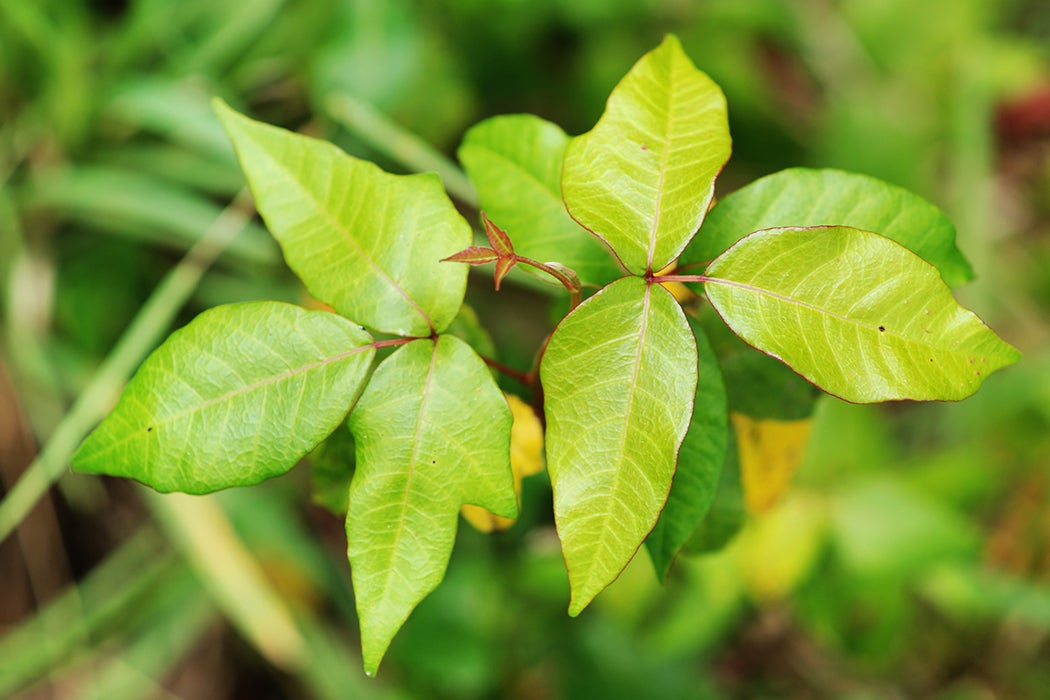It’s summer, and prime time for gardening and other outdoor activities. It’s also time for outdoor hazards, such as ticks and poison ivy. Poison ivy, Toxicocendron radicans, is ubiquitous in most of Eastern North America, growing everywhere from forests and gardens to urban vacant lots and sidewalks. There’s also a Western form. Not everyone is affected, but for those who are, contact can cause a nasty case of contact dermatitis, e.g. an itchy and sometimes painful rash.
Scholar William Gillis writes in Arnoldia that poison ivy is a member of the Sumac family, which along with poison sumac and poison oak are the main irritant plants of North America.
Poison ivy itself is found only in North America and East Asia. It was originally native to North America, but crossed the Bering Land Bridge into Asia some time in the past when climates were milder than they are today. The plant first appeared in Asian writings more than a thousand years ago. Among Europeans, Captain John Smith (most famous for his apocryphal rescue by Pocahontas) was one of the first Europeans to describe Poison Ivy. According to Captain Smith, the plant “causeth itchynge.”
The offending chemicals in poison ivy are uroshiols, which are found in the leaves and sap. Intact stems can be touched safely, since uroshiols are transported in the phloem, transport vessels located deep within the body of the tree. When stems are cut, however, the sap can come in contact with skin. Uroshiol persists on surfaces, so, for instance, a glove that touches poison ivy can transfer the chemical to skin. Worse, it survives burning, so poison ivy smoke can cause dermatitis in the mouth, eyes, throat, or even the respiratory system. It really only affects people; birds happily eat poison ivy berries, dispersing the plant in the process.
Weekly Digest
Great news for those birds: poison ivy has a bright future. According to scientist L.H. Ziska and colleagues writing in Weed Science, increasing atmospheric CO2 increases the growth rate and leaf area of poison ivy plants. The larger plants contain more uroshiol; they also recover more quickly from damage. So the poison ivy of the future will be larger and easier to accidentally touch, while simultaneously being more difficult to get rid of.
Unfortunately for summer recreationists, poison ivy is highly variable in appearance and can be difficult to identify. It usually takes the form of a hairy vine which can be several inches thick. At least the old saw generally does apply: “leaves of three, let it be.”







